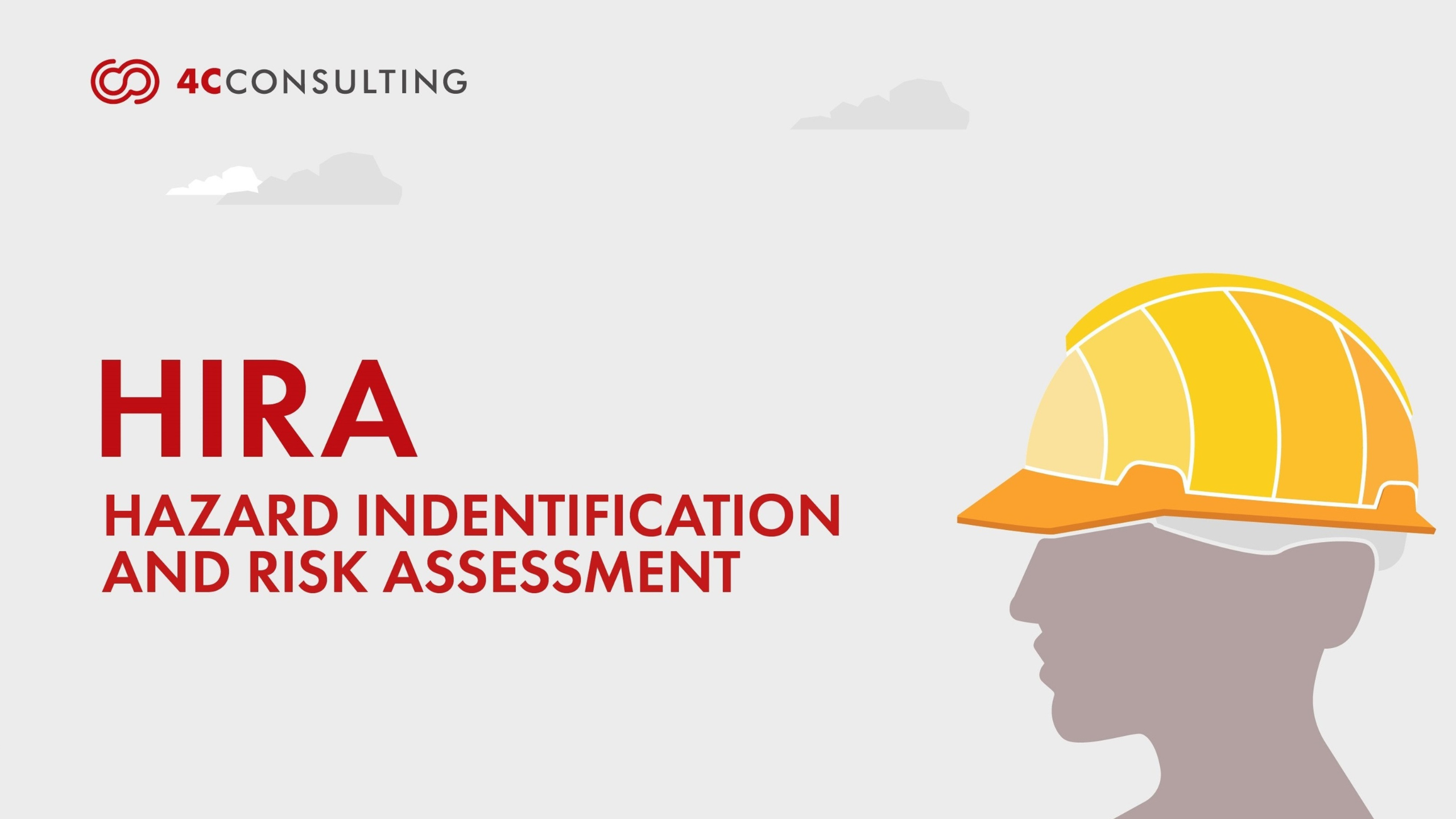
HIRA: A Guide to Hazard Identification and Risk Assessment for Workplace Safety
30th Mar, 2024
In contemporary work settings, ensuring the safety and well-being of employees stands as a paramount concern. Each year, workplace incidents lead to countless injuries and substantial financial losses for businesses globally. Consequently, implementing proactive safety measures becomes imperative. Enter HIRA – Hazard Identification and Risk Assessment. HIRA serves not merely as another safety protocol but as a strategic approach aimed at identifying potential hazards and evaluating associated risks. This proactive methodology not only elevates workplace safety but also instils a culture of prevention and readiness within organizations. In this blog, we will delve into the significance of HIRA, its implementation process, and benefits it presents in transforming workplace safety standards.
What is HIRA?
HIRA, which stands for Hazard Identification and Risk Assessment, embodies a systematic approach utilized to identify potential hazards within the workplace and evaluate their corresponding risks. HIRA serves as a critical component in the field of occupational health and safety. It’s a two-step process aimed at first uncovering potential hazards within a workplace, then evaluating the extent of risks these hazards might pose to employees, processes, or the environment. The core objective of HIRA is centred on proactively preventing accidents, injuries, and occupational illnesses by addressing potential hazards before they escalate into safety incidents. Through a methodical analysis of hazards and risk assessment, organizations can effectively prioritize mitigation efforts, allocate resources efficiently, and establish a safer work environment for all stakeholders involved.
How to Conduct HIRA in your organization?
To effectively conduct Hazard Identification and Risk Assessment (HIRA) in your organization, it’s pivotal to start with the foundational steps-
- Assemble the Team: Form a team comprising individuals with relevant expertise and authority to conduct the assessment. Ensure everyone understands the objectives and scope of the assessment.
- Hazard Identification: This crucial first phase involves a systematic review of all workplace activities, processes, and environments. The goal is to identify any potential hazards that could pose risks to safety. Employing various methods such as workplace inspections, job safety analyses, and engaging in employee consultations offers a broad perspective on identifying possible risks. These encompass-
- Physical Hazards (e.g., machinery, equipment, hazardous substances).
- Chemical Hazards (Exposure to toxic chemicals).
- Ergonomic Hazards (related to workplace design and ergonomics).
- Biological Hazards (e.g., exposure to viruses or bacteria).
- Psychosocial Hazards (e.g., workplace stress or violence).
- Risk Assessment: After identifying potential hazards, the next step is to assess these risks. This involves evaluating the likelihood of each hazard occurring and the potential impact it could have on the workplace. This assessment helps prioritize which hazards require immediate attention and which can be monitored over time.
- Risk Mitigation Strategies: Create and implement effective mitigation strategies to address identified hazards and reduce associated risks. This may involve implementing engineering controls, administrative measures, or providing personal protective equipment (PPE).
- Training and Education: Ensure employees receive comprehensive training on hazard recognition, risk assessment, and control measures. Empower them to actively participate in safety initiatives, fostering a culture of safety awareness.
- Monitoring and Review Procedures: Set up procedures for ongoing monitoring and review of workplace hazards and control measures. Regularly reassess risks as new hazards emerge or workplace conditions change. Incorporate feedback from employees, safety audits, and incident investigations for continuous improvement.
- Documentation: Document all findings from the HIRA process, including identified hazards, assessed risks, and implemented mitigation strategies. Maintain records of training sessions, monitoring activities, and any changes made to safety protocols.
- Monitoring and Review: Regularly review and update the HIRA process to ensure its effectiveness and relevance. Adjust the assessment process and mitigation strategies as needed to address evolving organizational needs and new hazards.
By following these steps, organizations can conduct Hazard Identification and Risk Assessment (HIRA) comprehensively, ensuring the safety and well-being of employees while promoting a culture of continuous improvement in workplace safety.
Benefits of implementing HIRA?
Implementing a robust workplace safety program, such as the HIRA (Hazard Identification and Risk Assessment), offers numerous benefits to organizations, including:
- Employee Health and Well-being: Prioritizing workplace safety minimizes accidents and injuries, resulting in a healthier workforce with fewer instances of illness or disability.
- Cost Reduction: Preventing accidents reduces healthcare expenses, workers’ compensation claims, and potential legal costs. It also minimizes downtime and enhances productivity by curbing absenteeism.
- Enhanced Morale and Productivity: A safe work environment boosts employee morale, leading to increased productivity and job satisfaction. This positive atmosphere can also reduce turnover rates.
- Legal Compliance: Adhering to safety regulations ensures avoidance of fines, penalties, and legal liabilities. It also safeguards the company’s reputation by demonstrating commitment to safety standards.
- Improved Reputation: A strong safety record attracts talent and impresses clients, investors, and stakeholders, enhancing the organization’s reputation and brand image.
- Risk Management: Systematically identifying hazards and assessing risks enables proactive measures to mitigate dangers, reducing the likelihood of accidents and enabling swift emergency response.
- Quality Enhancement: A safe workplace correlates with higher quality output as employees are more focused and less error-prone when supported by effective safety protocols.
- Fostering Innovation: Safety initiatives encourage a culture of continuous improvement, with employees more likely to suggest innovative solutions to safety concerns, leading to ongoing enhancements in processes and procedures.
- Competitive Advantage: A strong commitment to workplace safety differentiates an organization from its competitors, appealing to clients and partners who prioritize employee well-being.
- Promoting Sustainability: Workplace safety aligns with broader sustainability goals, contributing to environmental responsibility, resource conservation, and social welfare, thereby ensuring long-term organizational success.
In conclusion
HIRA – Hazard Identification and Risk Assessment – emerges as a pivotal tool for enhancing workplace safety, mitigating risks, and fostering a culture of prevention and readiness within organizations. By systematically identifying potential hazards, assessing associated risks, and implementing effective mitigation strategies, HIRA enables organizations to prioritize employee well-being, reduce costs, ensure legal compliance, and enhance overall productivity and reputation. Embracing HIRA not only safeguards employees but also positions organizations for long-term success and sustainability in an ever-evolving work environment.
HOW 4C CAN FACILITATE IMPLEMENTING HIRA IN YOUR ORGANIZATION?
Partner with 4C to elevate your organization’s compliance with HIRA. Our seasoned consultants specialize in Risk Mitigation and Hazard Analysis, offering unparalleled guidance for seamless HIRA Implementation. With over 15+ years of experience, 10,000+ training hours, and 50+ Workshops under our belt, our team empowers you with the requisite knowledge and skills for successful HIRA implementation. From comprehensive risk identification and analysis to providing effective mitigating solutions, we prioritize workplace safety for your employees. Choosing 4C Consulting not only ensures regulatory adherence but also enhances your brand’s reputation and consumer trust. Contact us now to embark on your journey towards HIRA certification today.
